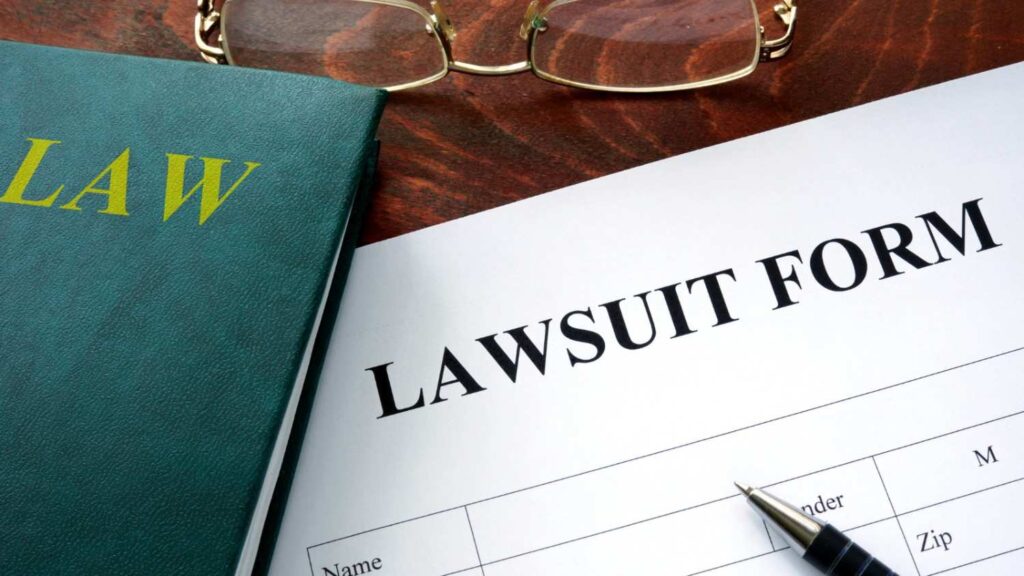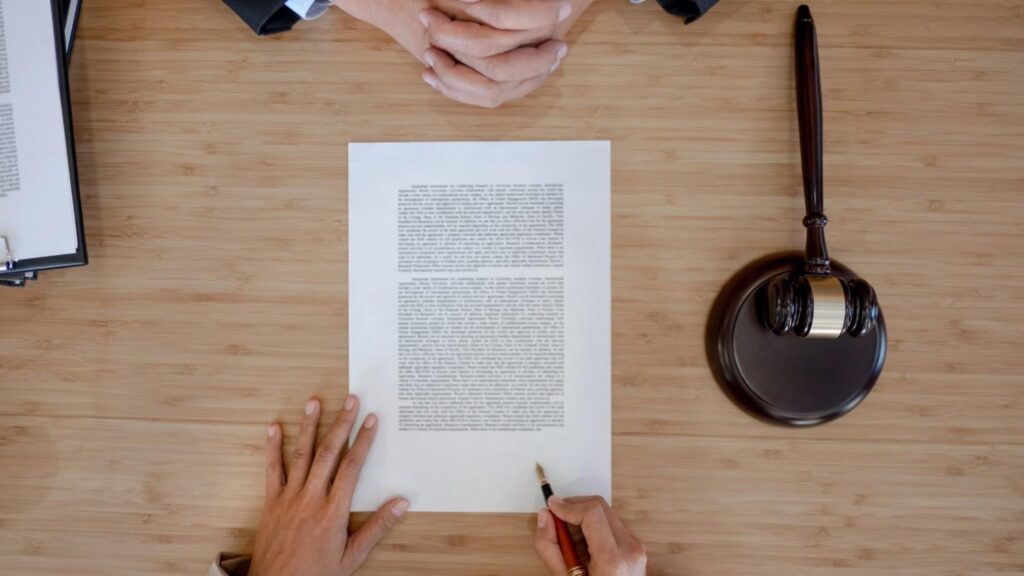Legal disputes can feel like an uphill battle. The endless paperwork, unfamiliar legal terms, and looming deadlines can leave you feeling overwhelmed and unsure of your next move. Worse, one misstep—missing a key filing or mismanaging communication—can turn a manageable issue into a costly, drawn-out ordeal.
But there’s good news: you can handle these challenges effectively and protect your interests with the right approach. This guide will help you understand the legal framework behind lawsuits and provide actionable steps to navigate disputes confidently. Along the way, we’ll highlight how working with a reliable business dispute attorney can make all the difference. While these steps are helpful, they are not a substitute for an attorney representing you in the lawsuit. As an attorney I have seen non-attorneys first hand at Court who thought they could handle their legal matter, but make key mistakes that would be avoided with an experienced attorney.
By the end, you’ll grasp what to expect and how to take control of the situation.
Understanding Lawsuits and Their Legal Framework
A lawsuit is a formal process where one party seeks to resolve a dispute by filing a case in court. It involves presenting evidence and arguments before a judge or jury, who will decide the outcome. Lawsuits are often filed in response to breaches of contracts, personal injuries, or property disputes.
The legal framework for lawsuits varies by jurisdiction, but it typically includes rules governing how cases are filed, how evidence is shared, and how proceedings unfold. This structure ensures fairness and consistency, allowing both parties to present their case. Understanding these rules is essential for navigating the process successfully.
The Critical Importance of Proper Dispute Management
Effective dispute management can differentiate between a favorable resolution and unnecessary complications. Mishandling a dispute often results in higher costs, lost time, and damaged relationships. Addressing disputes with a structured approach minimizes risks and ensures better outcomes.
Proper dispute management ensures these critical variables:
- Prevents escalation: Early intervention and proper management reduce the chances of unmanageable disputes.
- Saves money and time: Efficient handling avoids delays and lowers legal costs.
- Preserve professional relationships: Proper resolution methods like mediation help maintain trust and partnerships.
- Strengthens legal standing: Organizing evidence and adhering to legal processes improve the chances of a favorable result.
Taking disputes seriously and managing them carefully safeguards your interests while minimizing disruptions to your personal or professional life.
Essential Steps in Managing Legal Disputes
Handling a legal dispute involves several critical stages, each requiring focus and preparation. From gathering evidence to trial preparation, following the right steps ensures you stay organized and protect your legal interests.
Initial Assessment and Documentation of Your Case
The first step in any legal dispute is to assess the situation objectively. Review what happened, identify key dates, and outline the facts. Avoid assumptions or emotional biases during this stage. Your goal is to clearly define the problem and understand whether the issue warrants legal action.
Next, gather all relevant documents and evidence. These might include contracts, emails, invoices, photographs, or other records that support your claims or defense. Thorough documentation lays your case foundation, helping you and your legal team build a strong argument. Organizing these materials early will save time and strengthen your position as the case progresses.
Pre-litigation Communication and Negotiation Strategies
Before filing a lawsuit, resolving the issue through direct communication or negotiation is often beneficial. Engaging with the opposing party calmly and professionally can clarify misunderstandings and potentially lead to an agreement. Express your concerns clearly and provide supporting facts to back up your stance.
Consider formal methods like mediation if direct communication doesn’t work. These approaches involve neutral third parties who facilitate discussions and propose solutions. Resolving disputes outside of court saves time, reduces costs, and keeps relationships intact, making it a worthwhile step to explore before pursuing litigation.
Filing or Responding to a Lawsuit
When pre-litigation efforts fail, filing or responding to a lawsuit becomes necessary. If you’re initiating the case, your first task is to draft a complaint that outlines your legal claims and specifies the remedies you seek. This document must comply with court rules and detail the facts. For defendants, responding promptly with an answer or counterclaim is equally important to avoid default judgments.
At this stage, working with a trusted business contract attorney is essential. They will guide you through filing, ensuring your documents are accurate and meet all legal requirements. Their knowledge minimizes errors, helping you stay on track with court deadlines and positioning your case for success.
Navigating the Discovery Process
Discovery is the stage where both sides exchange evidence and gather information to prepare their arguments. This process involves several methods, including written questions (interrogatories), document requests, and depositions where witnesses provide testimony under oath. It’s a critical phase that can uncover facts essential to your case.
To navigate discovery effectively, stay organized, and be responsive. Work closely with your attorney to review incoming requests and prepare answers or documents promptly. Avoid withholding information or being uncooperative, which can lead to legal penalties. Transparency and thoroughness during discovery strengthen your case and prepare you for the next steps.
Trial Preparation and Court Proceedings
As your case moves closer to trial, preparation becomes key. Your attorney will develop your legal arguments, identify witnesses, and organize evidence for presentation in court. This stage often includes pre-trial motions and conferences where the judge may address procedural issues or encourage settlement discussions.
Understanding courtroom procedures and maintaining professionalism is essential during proceedings. Familiarize yourself with how the trial will unfold, including opening statements, witness testimonies, cross-examinations, and closing arguments. Preparation and confidence ensure you present your case effectively, whether before a judge or jury.
Selecting and Working with Legal Representation
Choosing the right attorney is among the most critical decisions in a legal dispute. A skilled lawyer can navigate the complexities of your case and provide the guidance needed to achieve the best possible outcome.
Key Factors in Choosing the Right Attorney
Selecting an attorney involves more than finding someone with a law degree. Look for someone experienced in your type of case and with a proven track record of success in similar disputes. For example, if your case involves a business contract, choose an attorney with a heavy background in business law. This ensures they understand the nuances of your situation and can offer targeted advice.
Additionally, consider their communication style and professionalism. Your attorney should be someone you trust and feel comfortable working with. Ask about their approach to cases like yours and evaluate whether they listen to your concerns. Building a connection early helps create a strong foundation for collaboration.
Understanding Legal Fees and Payment Structures
Legal representation often comes with significant costs, so understanding fee structures upfront is essential. Attorneys generally charge by the hour for litigation and often require a retainer that their time and expenses of the case are billed against. The retainer is often replenished as the case progresses.
Building an Effective Attorney-Client Relationship
A strong relationship with your attorney can significantly impact the success of your case. Start by sharing all relevant information, no matter how minor. Transparency allows your attorney to develop a comprehensive strategy and anticipate potential challenges.
Maintain open communication throughout the process. Respond promptly to requests for documents or clarifications, and don’t hesitate to ask questions about your case. A collaborative approach ensures you and your attorney remain aligned on goals and strategies, making the legal process smoother and more efficient.
Maximizing the Value of Legal Services
To make the most of your legal representation, approach the relationship as a partnership. Preparation is key—organize your documents, understand your goals, and communicate your expectations. These steps save time and reduce unnecessary back-and-forth with your attorney.
Work with a comprehensive business attorney who can address all aspects of your case, from drafting contracts to representing you in court. Their broad knowledge ensures every detail is noticed, maximizing your chances of success. A proactive approach to legal services strengthens your case and minimizes costs and delays.
Moving Forward After Resolution
Resolving a lawsuit brings closure to a challenging process and offers a chance to look ahead. Reflect on the experience to identify lessons learned and strategies for avoiding similar disputes in the future. This reflection helps you improve your approach to potential conflicts while building a more proactive foundation for handling legal matters.
Once the case is resolved, promptly fulfill any obligations, such as adhering to settlement terms or court orders. Use this opportunity to strengthen your policies, review contracts, or seek advice from a legal professional. Taking these steps ensures you move forward confidently while reducing the likelihood of future disputes.




